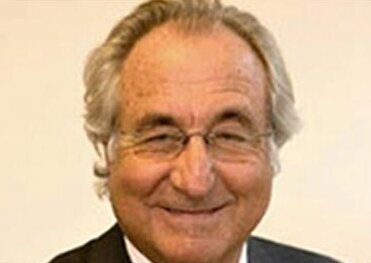
As news spreads of Bernard Madoff's alleged $50 billion fraud, many are wondering what exactly a Ponzi scheme is and how to avoid becoming a victim.
Ponzi or "pyramid" schemes have been around for years, with slight variations. They "rob Peter to pay Paul": early investors - at the top of the pyramid - are paid off with money from newer victims - at the bottom. The modern name comes from Charles Ponzi, who stole millions of dollars from thousands of New Englanders in the 1920s. He promised that his postage stamp speculation would yield 40% returns in just 90 days, compared with the then prevailing 5% annual interest on savings accounts. Ponzi actually purchased only $30 worth of international mail coupons but, as with all such frauds, a few early investors were paid off to make everything look legitimate until the scheme collapsed under its own weight once new victims could no longer be found.
Reported victims of Madoff's alleged malfeasance include very sophisticated investors: the foundation of Nobel laureate Elie Wiesel; New Jersey Senator Frank Lautenberg, one of Washington's wealthiest legislators; and director Steven Spielberg's charity, the Wunderkinder Foundation. Worse still, some of the world's biggest financial institutions - Britain's HSBC and Royal Bank of Scotland, Spain's Santander, France's BNP Paribas, and Japan's Nomura Holdings - say they were taken in. Even the Securities and Exchange Commission (SEC), the government's own watchdog, has admitted that, although its staff had heard repeated allegations against Madoff and his firm beginning in 1999, none had been recommended for formal action.
Despite apparently fooling such august investors, the right checks into Madoff's fund might have revealed plenty of red flags consistent with Ponzi schemes.
Of course, simply reading a prospectus is not enough: successful fraudsters do not reveal their scams up front. It is no surprise that SEC Chairman Christopher Cox says that the commission's investigation "indicates that Mr. Madoff kept several sets of books and false documents, and provided false information...to investors and to regulators." Digging deeper into public documents filed on paper, rather than electronically, with the SEC, or others sent to Companies House - the British government's register of corporations - would have revealed that in 2001 and 2002 Madoff made personal loans of $62.5 million to an affiliated company of which he was the sole voting shareholder. These were ultimately converted to shareholder's equity in 2007 when Madoff's brokerage firm was experiencing a significant outflow of cash.
Interviews of investment professionals might also have yielded useful insight. Ponzi schemes typically promise sky-high returns over a short time or consistent ones even in economic downturns. Part of the attraction of Madoff's fund was the latter: since 2004, annual returns ranged from 7.3 percent to 9 percent, but over the last decade they were typically in the low-double digits according to one anonymous investor. This victim added that the fund claimed to follow a "split strike conversion" strategy. The latter entails owning stock and buying and selling related options, which limits upside potential as well as downside risk. Jon Najarian, an acquaintance of Madoff who has traded options for decades, said "many of us questioned how that strategy could generate those kinds of returns so consistently."
Also unusual was how Madoff kept his hedge fund's financial statements under "lock and key," according to prosecutors, and was "cryptic" about the firm. The hedge fund business was even located on a separate floor from the market-making one. Such a lack of transparency should have been a red flag for anyone willing to look.
Unfortunately, too many failed to do so. The moral of the story is: seek and ye shall find.